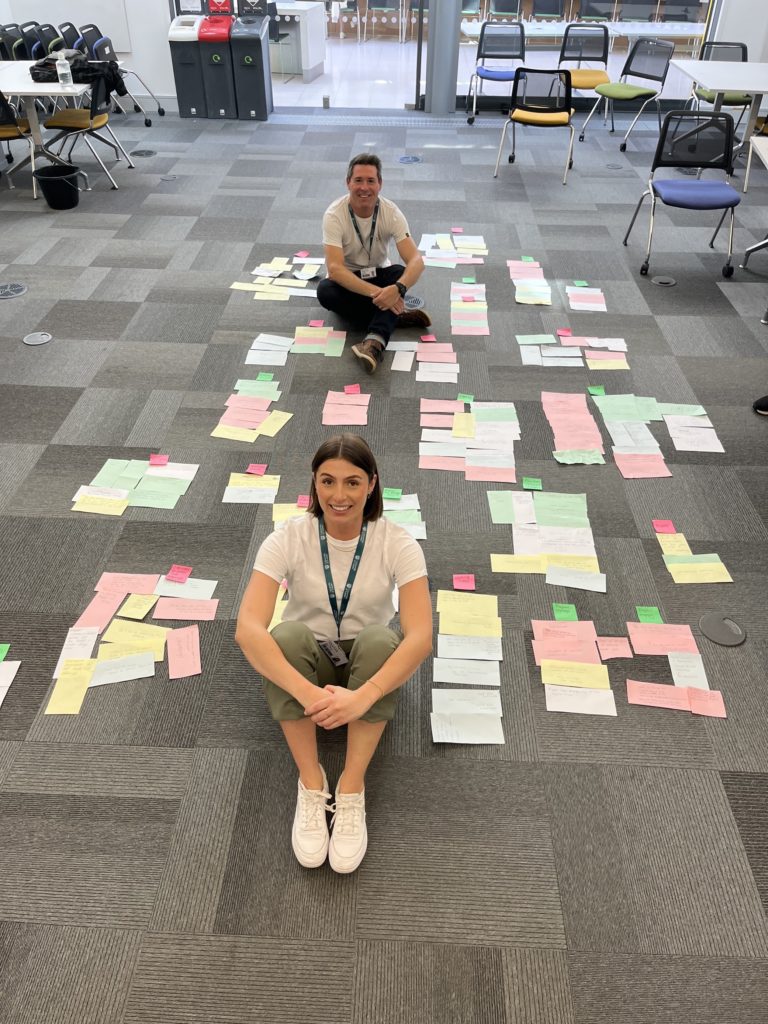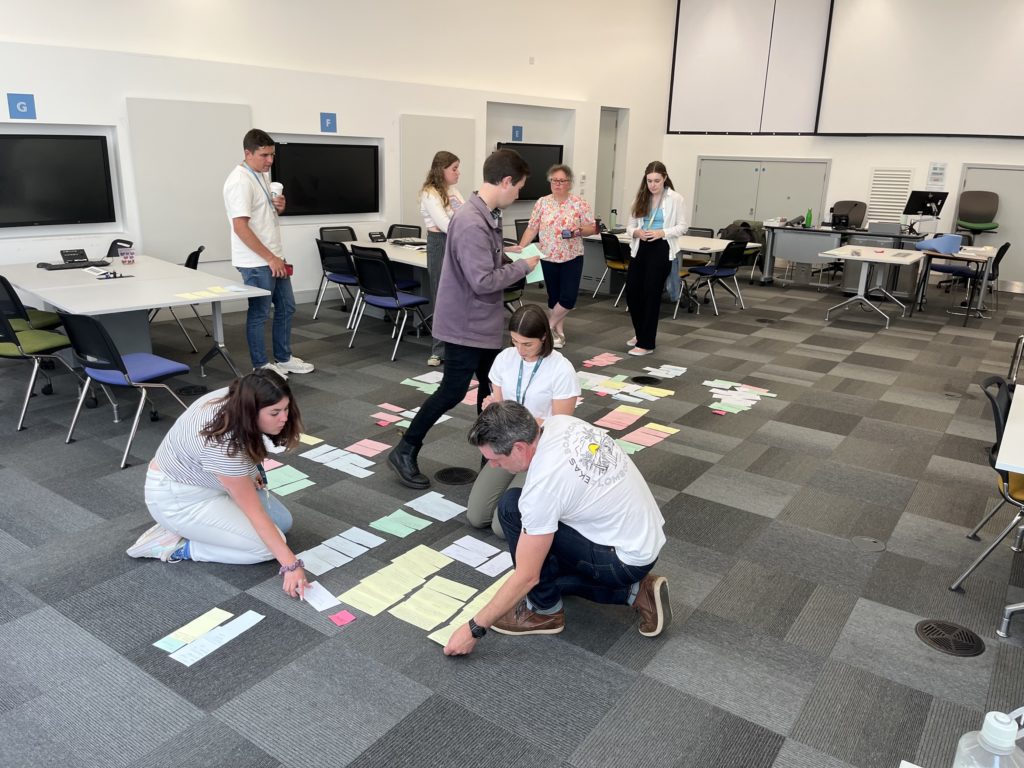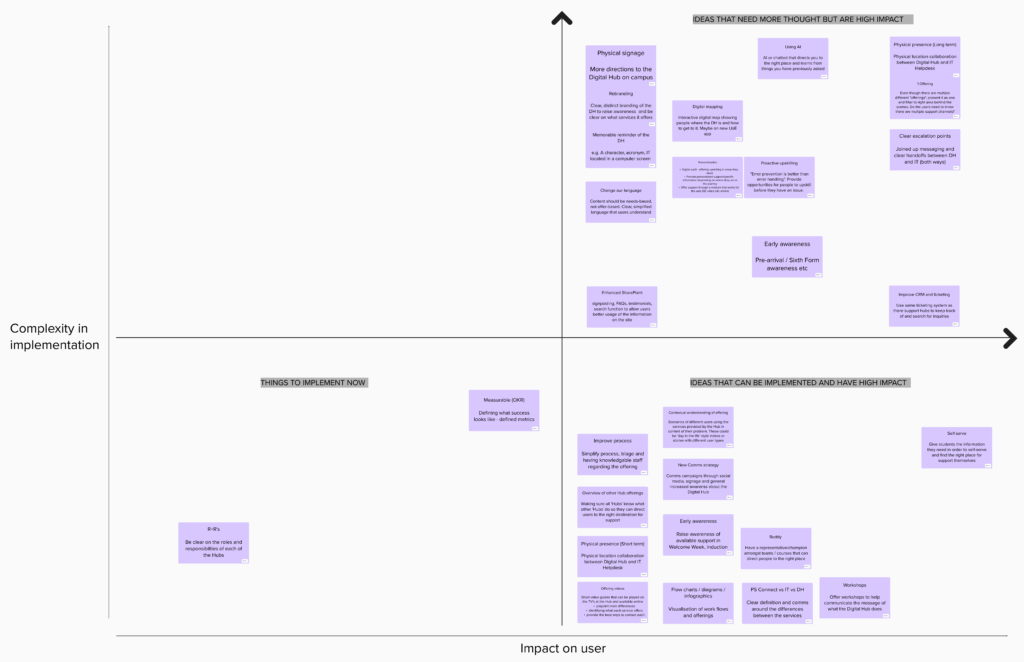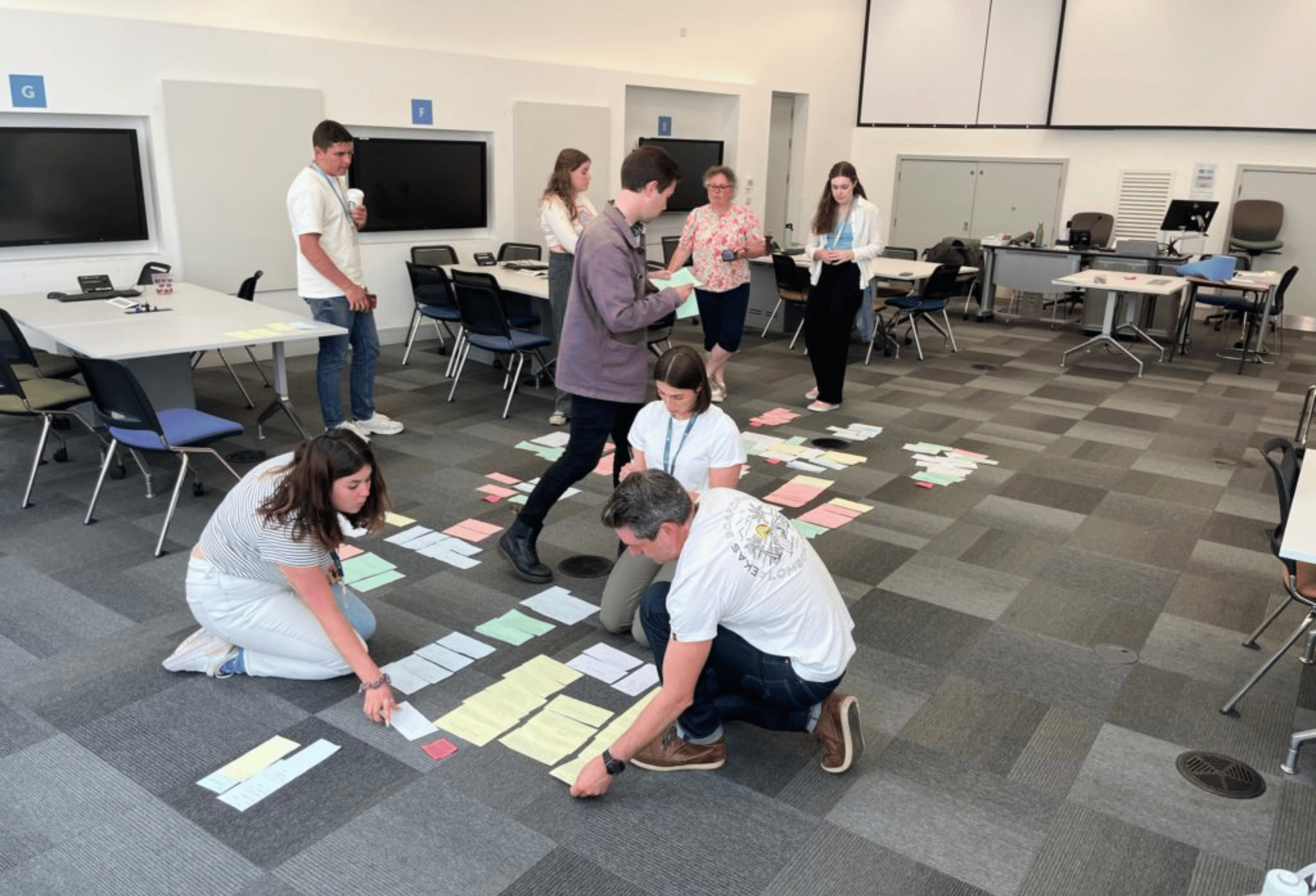In UoE Digital, in addition to being user-led in everything we do, we implement Design Thinking as a methodology into how we work. Read this blog to learn how one of our UX Researchers, Amelia Johnson ran an ideation workshop to explore possible ways to raise awareness amongst students and colleagues of the University’s Digital Hub and how it can benefit our users.
Entering the Solutions Space
As a UX Researcher, the majority of my time is spent in the ‘Problem space’, understanding user needs and translating them to other members of the team – Product Owners, Designers, Developers, etc. However, I was recently given an opportunity to follow the Design Thinking theory all the way through and get involved in the ‘Solution space’.

One of our products is the Digital Hub – a student and staff facing support hub specialising in supporting with use of digital tools. Initial research (from my work in the problem space) revealed some key challenges that our users were experiencing, the most popular challenge being the lack of clarity on the offering of the Hub. Themes like “What can the Digital Hub support me in?”, “How does the Digital Hub differ from the IT Helpdesk?” and “Where is the Digital Hub located?” were common findings from our research. After playing back these findings to Marie, our Digital Hub Product Owner, we were asking ourselves “What next?”.
I put my Design Thinking hat on and realised that there was an opportunity here to engage with stakeholders across the University to ideate (create ideas) around the main challenge statement – “Our users don’t understand the provisions of the Digital Hub”.
This ideation session was held in two parts – the aim of session one was to generate as many ideas as possible to solve the challenge statement, building on the ideas of others and thinking beyond the current limitations; this is known as divergent thinking. The aim of session two was to take all of the ideas we generated, analyse how feasible, desirable and viable they are, and work out how we were going to implement them; this is known as convergent thinking. See Figure 1 for more context on divergent and convergent thinking.
Session One: Divergent Thinking
We began the session by talking through our user research and recapping we arrived at the challenge statement of “our users don’t understand the provisions of the Digital Hub”. This is a really important part of setting the scene, getting the participants to understand the needs of and empathise with the user.
Next, the “Worst Possible Idea” icebreaker activity helped participants to get people into the ideation mindset. This involves asking participants to think up the worst possible solutions to the problem statement. I really enjoyed seeing how much the participants enjoyed and engaged with this activity and pushed the boundaries of what the worst ideas could be. They also had fun creating these ideas which helped the participants feel more comfortable with each other going forward.
‘How Might We’ (HMW) statements are designed to guide ideation and reframe the challenge statement. They are derived from the challenge statement – an example being “How might we help users find the right support for their problem?”. This ideation session had five HMW statements and participants moved around them in pairs to brainstorm their ideas – quantity over quality was the goal for this ideation.
During a short break, the other facilitators and I clustered similar ideas within each HMW to allow participants to review them and build on the ideas of others.
I wanted to keep this session in the divergent solutions space, generating as many ideas as possible and thinking beyond the current limitations. Another clustering exercise with the final ideas (which had to be done on the floor because there were so many ideas!) revealed the workshop created 202 ideas in 26 different groupings.
This was really exciting for many reasons:
- All participants were able to generate ideas to solve a problem, which isn’t the normal way of working for them
- We had LOTS of ideas of how to solve the challenge statement and make the experience better for our users
- My first ideation session was a success! I learnt lots of things along the way and would change some things for next time, but I was really pleased with how it went.



Session 2: Convergent Thinking
The second session aimed to work out the next steps and how we were going to implement all the ideas generated in the first session. This was the time for people to be thinking in the convergent solutions space – questioning the feasibility of an idea, evaluating if it had been done before and if it was not successful etc.
For this exercise, we mapped every idea grouping onto an impact and complexity matrix. This made it really easy to see the following:
- Which ideas we could implement straight away (bottom left).
- Which were of low complexity but had a high impact on the user (bottom right) – typically short-term implementations.
- The ideas that were more complex but had a high impact on the user so just need some more thought (top right) – typically long-term implementations.

Myself, the Product Owner and the stakeholders found this matrix really helpful in mapping out the next steps and how we can improve the experience of the Digital Hub for our users.
My Learnings
Here are my 3 biggest learnings from running an ideation session:
- It’s important to pitch the research correctly so people have enough information to feel empathy for the users, but not too much information that they are overwhelmed with detail
- To be flexible with timings – some really important discussions came out of the ideation and we didn’t want to cut them short, so adapted the session to accommodate these
- Just how important this type of workshop is in co-creating a solution with different stakeholders. Everyone brings something different to the table – perspectives, experience, technical knowledge – which means that ideas are varied and can be developed further. But importantly, everyone feels they have had a say in the future of the Digital Hub and how it can improve the service for our users.
Want to find out more about our 2030 Digital Strategy and how we are becoming the most accessible and connected university destination for any user? Visit our Strategy website.
Are you a University of Exeter student wanting to get involved with shaping your student experience? Find out how you can get involved here.
-Written by Amelia Johnson, UX Researcher for Digital

